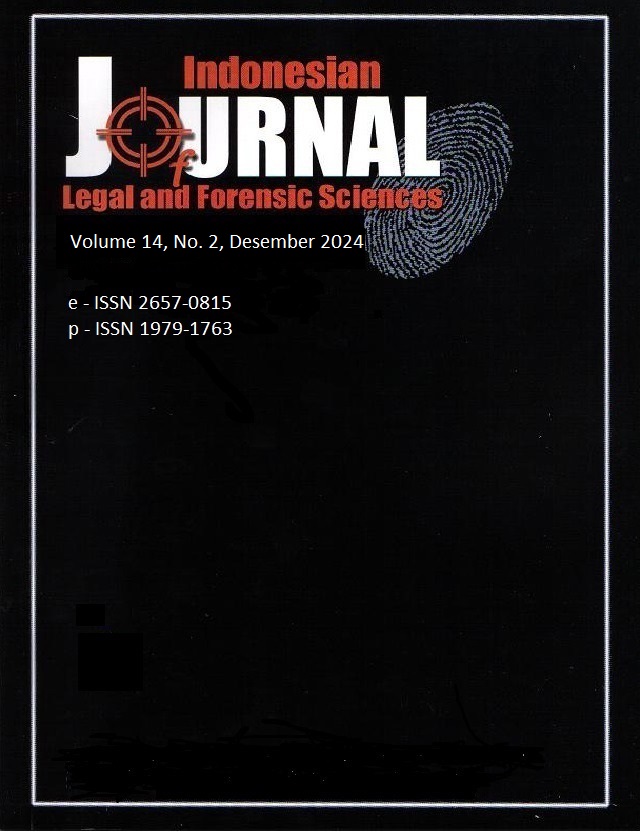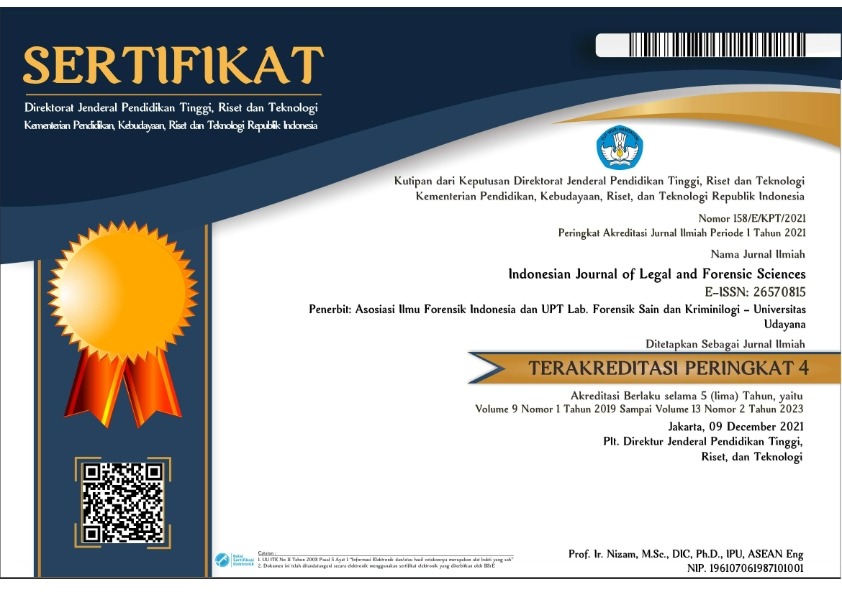Identifikasi Porotic Hyperostosis dan Cibra Orvitalia pada Temuan Rangka (Studi Kasus Review)
Antropology Forensic
Abstract
Forensic anthropology is a specialized field within anthropology that aims to identify individuals based on available evidence, such as determining characteristics like race, gender, approximate age, height, body shape, unique features, health status, time and cause of death, as well as reconstructing facial features. Individualized data, including patterns of diseases, can offer insights into the individual's life. Common conditions like pathological porotic hyperostosis and cibra orvitalia often leave lesions on the skull and eye sockets, yet no such lesions were found on the skeletal remains in the suitcase.
Downloads
References
[2] Koesbardiati, T. 2016. Modifikasi Tubuh dan Potensinya Dalam Identifikasi Jenasah dan Rangka Tak Dikenal. Biokultur. 5(1).97-106.
[3] Hidayat, T dan Susanti, R. 2017. Analisis Antropologi Forensik Pada Kasus Penemuan Rangka Di dalam Koper. Prosiding pertemuan ilmiah Tahunan 2017.281-285.
[4] Zarina, G., Sholts, S. B., Tichinin, A., rudovica, V., Visna, A., Engizere, A., Nuiznieks, V., Bartelink, E. J., Warmlander, S. K. T. S. 2016. Ciribra orbitalia as a potential indicatorof childhood strees: evodance from paleopathology, stable C, N, and O Isotop and trace element concentration in choldrenfrom a 17th-18th century cemetery in jekabpils, Latvia. Journal of trace element in medicine and biology.38:131-137.
[5] Armelagos, G. J., Sirak, K., Werkema, T., & Turner, B. L. (2014). Analysis of nutritional disease in prehistory: The search for scurvy in antiquity and today. International Journal of Paleopathology, 5, 9-17.
[6] Wapler, U., Crubézy, E., & Schultz, M. (2004). Is cribra orbitalia synonymous with anemia? Analysis and interpretation of cranial pathology in Sudan. American Journal of Physical Anthropology: The Official Publication of the American Association of Physical Anthropologists, 123(4), 333-339.
[7] Sari, A. S. 2018. Pola Cribra Orbitalia dan Porotic Hyperostosis pada sisa rangka menusia prasejarah dari situs melolo, sumba, Nusa tengara Timur. Antrounairdotnet.1(7):298-309.
[8] Walker, P. L., Bathurst, R. R., Richman, R., Gjerdrum, T., & Andrushko, V. A. (2009). The causes of porotic hyperostosis and cribra orbitalia: A reappraisal of the iron‐deficiency‐anemia hypothesis. American Journal of Physical Anthropology: The Official Publication of the American Association of Physical Anthropologists, 139(2), 109-125.
[9] Temple, D. H. 2010. Patterns of Systemic Stress During the Agricultural Transition in Prehistoric Japan. 112- 124.



















